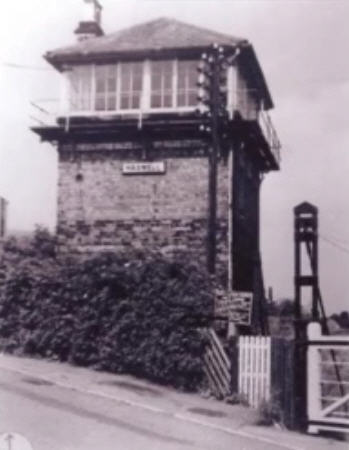127sho_SIGNAL BOX?
127sho_Shoreditch Overground.
If form follows function, what happens when the intended purpose of a space becomes obsolete? When a building’s use is no longer required? Does form follow function out the door? Let’s look at another brick station for answers. Bankside Power Station closed in 1981 due to rising oil prices and after 29 years of providing power. Then after 19 years of inactivity the building reopened as the Tate Modern in 2000 and 13 years later, it is fair to say, the buildings ‘second life’ as an artspace has triumphed its original purpose.
The social theorist Baudrillard would describe a building that loses its use as a signifier. A hollow space containing only symbols of a former existence. Shoreditch Station without the railways is ironically just ‘a signal box’. A loss of original use does not however have to signal a loss of value so, with a headnod to English Heritage’s ‘logical approach to the historic environment’ our SoS identifies that whilst the station has no historic, evidential or architectural value, it does retain a communal value. And it was for this reason we argued that the former station, less a building than a chattel, should be elevated on top of the new development.
For Shoreditch Station, the proposal to elevate the station to a higher ground is made meaningful when we realise that the ground beneath the station’s feet has already been swept away. The railway tracks and double-height vaulted walls were demolished to make way for the East London extension. The UCL Institute of Archeology has suggested that the station was never a building after all, as it is without foundations (the station structure sits on 6 steel beams spanning over non-existent platforms and tracks: the station’s purpose was derailed some time ago by TfL. So today the station sits above hollow ground, as a signifier of a time when it was once a station. A ghost building for ghost trains.
The story of Shoreditch Station is not only one of recession but also optimism. It needs to have a use that, like the neighbourhood it is situated in, is diurnal. Yet unlike the current scenario in Brick Lane, the station’s future use requires a diurnality that is not a fast-speed schizophrenia between daytime-shopping and nighttime-drinking, a slower space that embraces art and housing. Housing normalises a neighbourhood saturated with entertainment licences. And art , as evident in the streets and on the station, can provide new signs of tomorrow. Shoreditch Station already has an accidental new use as a focal point along street art tours. Whether the heritage vs art house strategy is manifest as old crowning the new, or it’s polar opposite, new bearing down on the old, it doesn’t really matter as long as there are both signs of the past and future omnipresent.
SAY WHAT_!?




